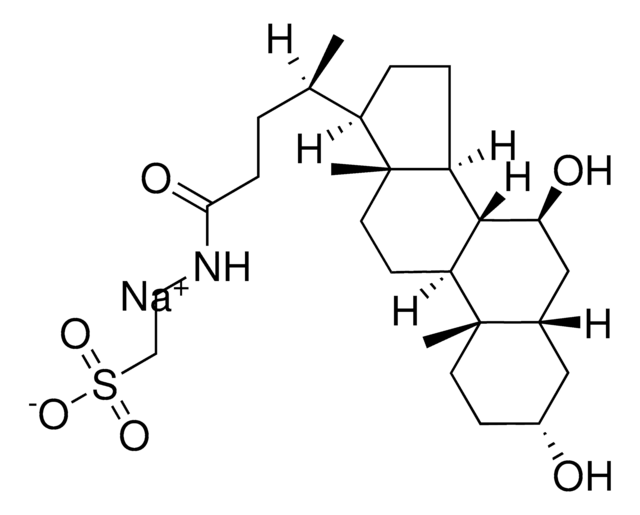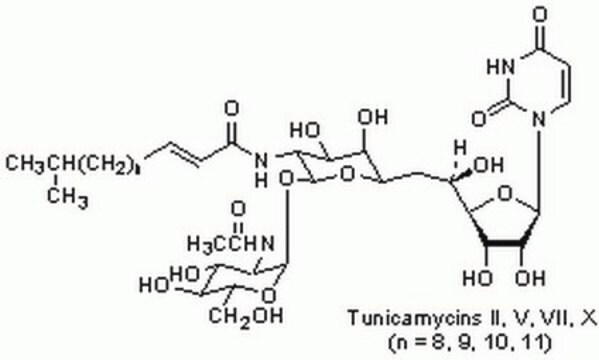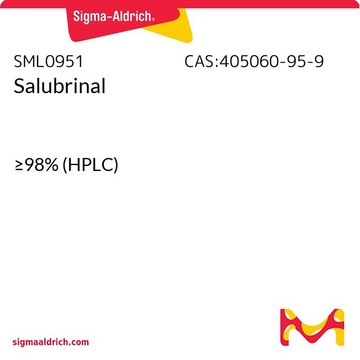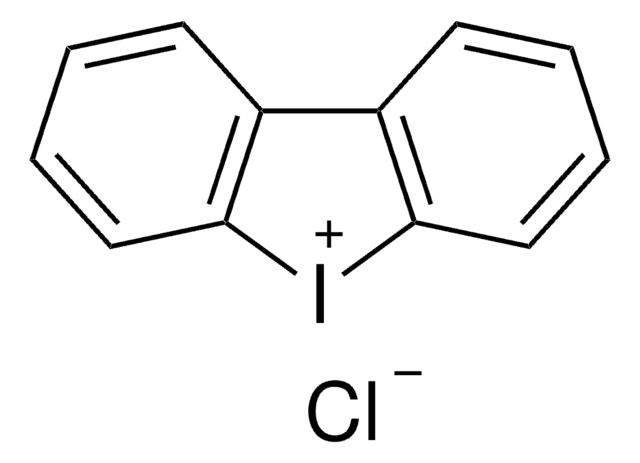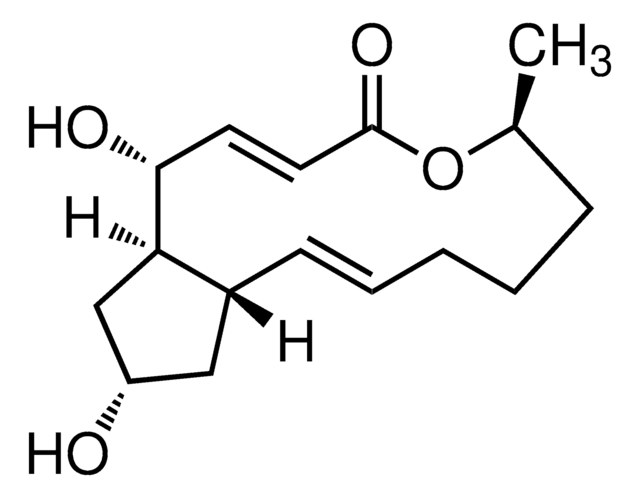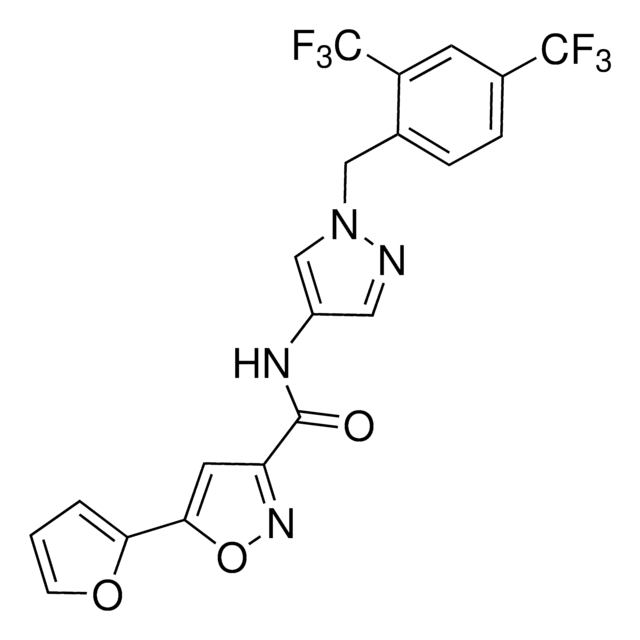SML1287
Tunicamycin
from Streptomyces sp., ≥98% (HPLC), DMSO solution, N-acetylglucosamine transferase inhibitor
About This Item
Productos recomendados
Nombre del producto
Tunicamycin Ready Made Solution, 5 mg/mL in DMSO, from Streptomyces sp.
biological source
Streptomyces sp.
Quality Level
form
DMSO solution
concentration
5 mg/mL in DMSO
storage temp.
2-8°C
SMILES string
N4(C=CC(=O)NC4=O)[C@@H]1O[C@@H]([C@H]([C@H]1O)O)C(O)C[C@H]2O[C@@H]([C@@H]([C@H]([C@H]2O)O)NC(=O)\C=C\CC(C)C)O[C@H]3O[C@@H]([C@H]([C@@H]([C@H]3NC(=O)C)O)O)CO
InChI
1S/C30H46N4O16/c1-11(2)5-4-6-16(38)32-19-23(43)20(40)14(47-29(19)50-28-18(31-12(3)36)22(42)21(41)15(10-35)48-28)9-13(37)26-24(44)25(45)27(49-26)34-8-7-17(39)33-30(34)46/h4,6-8,11,13-15,18-29,35,37,40-45H,5,9-10H2,1-3H3,(H,31,36)(H,32,38)(H,33,39,46)/b6-4+/t13?,14-,15-,18-,19-,20+,21-,22-,23-,24+,25-,26-,27-,28-,29-/m1/s1
InChI key
ZHSGGJXRNHWHRS-PEALBESXSA-N
General description
Application
Biochem/physiol Actions
Storage Class
10 - Combustible liquids
wgk_germany
WGK 1
flash_point_f
188.6 °F
flash_point_c
87 °C
Elija entre una de las versiones más recientes:
¿Ya tiene este producto?
Encuentre la documentación para los productos que ha comprado recientemente en la Biblioteca de documentos.
Los clientes también vieron
Nuestro equipo de científicos tiene experiencia en todas las áreas de investigación: Ciencias de la vida, Ciencia de los materiales, Síntesis química, Cromatografía, Analítica y muchas otras.
Póngase en contacto con el Servicio técnico

